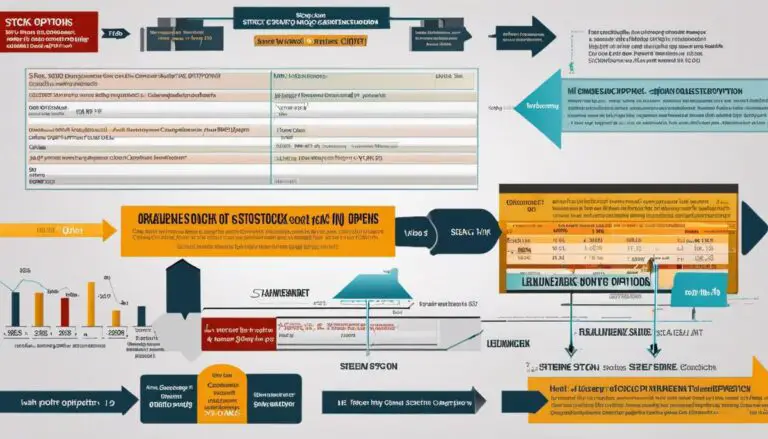The ebb and flow of financial markets echo the pulse of the global economy, with the vibrations of bullish optimism and bearish pessimism resonating through the decisions of investors everywhere. At the heart of any investment strategy lies the ability to decipher these patterns, and a keen understanding of bullish and bearish markets is foundational to navigating the complex tapestry of financial trading. As we embark on this explorative journey, we will dissect the anatomy of market trends, shed light on the forces that drive them, and arm you with the acumen to distinguish between whispers of fortune and murmurs of caution.
Understanding Bullish and Bearish Markets
Navigating the Rumble of Bulls and the Growl of Bears in Modern Markets
When it comes to the ebb and flow of financial markets, two dominant creatures emerge from the economic bestiary – the bull and the bear. These two titans symbolize the forces that drive the markets upwards or downwards. Understanding their nature is not only crucial for investors but for any entrepreneur looking to ride the waves of market trends and emerging opportunities.
First, let’s break down the profiles of these two market beasts. A bull market is characterized by confidence, rising stock prices, and the belief that strong results shall continue. It’s not merely about a momentary uptick in a few stocks; a true bull market is a sustained rise in the share price of a significant portion of the market. Typically, this occurs when the economy is strong or strengthening, with low unemployment and robust corporate profits fueling the charge.
In stark contrast, the bear market reflects declining stock prices, often triggered by a loss of investor confidence and anticipation of worsening economic conditions. A bear market endures a decline of 20% or more from recent highs, fueling a self-sustaining negative sentiment among investors. It’s the economic winter to the bull’s summer, where economic slowdown, high unemployment, or inflation can chill investor enthusiasm and market performance.
What causes the shift between bull and bear markets? A confluence of factors, from macroeconomic shifts to geopolitical tensions, can influence market sentiment. It’s vital for savvy entrepreneurs to identify these signals early. Interest rates, for example, are a critical indicator – rising rates may cool off a bull market, while declining rates can signal the onset of a bull resurgence.
Furthermore, market psychology cannot be underestimated. Collective investor psychology swings markets, and smart business leaders know how to read and react to this momentum. Fear and greed move markets as much as fundamentals. The successful entrepreneur must have a finger on the pulse of both emotion and economics.
Bulls and bears are not just fleeting symbols; they represent market cycles that can shape industry landscapes. Industries such as technology and healthcare may surge in a bull market fueled by innovation, while consumer staples often demonstrate resilience in bear markets as investors flock to safety.
In summary, thriving in the unpredictability of financial environments demands recognition and respect for the power of the bull and bear dynamics. Entrepreneurial success requires the foresight to foresee these shifts and the agility to pivot accordingly. It’s not just about surviving the growls and charges; it’s about leveraging them, turning market sentiment into rocket fuel for businesses willing to rise to the challenge. An astute entrepreneur knows that understanding these market conditions is less about predicting the future and more about crafting a strategy versatile enough to succeed in any financial climate.

Impact of Market Trends on Investment Strategies

Recognizing the Shift Between Market Phases
**Navigating Market Transitions: Recognizing the Tipping Point
**Entrepreneurs and investors alike, take heed – the tipping point between bull and bear markets is not to be overlooked. Market transitions are rarely announced with clarity, but certain signals can alert the astute to impending changes. Recognizing these signals is paramount for capitalizing on trends and mitigating risks.
One observable signal is the shift in economic indicators such as GDP growth, unemployment rates, and consumer spending. A deceleration in these areas often precedes a market downturn, while an uptick may herald a recovering or booming market. While macroeconomic data sets the stage, earnings reports give a real-time pulse on corporate health. A trend of surpassing or falling short of earnings expectations can indicate the market’s overall trajectory.
Furthermore, the bond market sends its own signals. An inversion in the yield curve – when short-term interest yields surpass long-term ones – is historically prophetic of a recession and, consequently, a transition to a bear market. Conversely, a steepening curve can suggest economic expansion and a bull market on the horizon.
Technical analysis also serves as a barometer for market shifts. Traders scrutinize moving averages, supports, and resistance levels – a breakthrough or breakdown of these can signify a broader market move. Moreover, volatility indexes such as the VIX, known as the market’s ‘fear gauge’, can indicate investor sentiment and potential reversals.
Another aspect to consider is investor behavior patterns. An excessive initial public offering (IPO) market, booming high-risk investments, or a rush towards ‘safer’ assets can all point to a change in market direction. When the crowd appears greedy or overwhelmingly fearful, it’s time to examine positions more closely.
Lastly, governmental policy shifts and geopolitical events can catalyze market transitions. Be it trade policies, election results, or international disputes – these factors can rapidly alter the investment landscape, necessitating a nimble and informed response.
In summary, whilst market transitions cannot be predicted with absolute certainty, there are distinct indicators that, when taken together, can give a savvy entrepreneur the edge needed to anticipate and act on a bull-to-bear transition, or vice versa. Stay informed, remain vigilant, and be prepared to pivot – success in a fluctuating market demands nothing less.

Market Sentiment Analysis Techniques
Harnessing the Power of Quantitative Analysis to Anticipate Market Trends
In the world of finance and investment, predictive analytical tools are the new alchemists, turning code and algorithms into insights that can give the savvy entrepreneur an edge. Staying ahead of market movements is not just about instinct; it’s about harnessing technology to make informed decisions.
Machine Learning and Artificial Intelligence (AI) have stepped out of science fiction and into our trading strategies. By analyzing vast data sets, AI systems detect patterns and anomalies that might indicate a pending shift in market sentiment. For instance, AI algorithms can sift through news articles and social media chatter to gauge consumer mood, which often precedes market reactions.
Big Data Analytics is another potent tool. This approach sifts through large volumes of structured and unstructured data, revealing hidden relationships between various market factors and potential opportunities or risks. Big data insights can lead to refined strategies for high-frequency trading or pinpointing the optimal time to enter or exit a position.
The use of Sentiment Analysis can’t be overstated. Quantifying the emotional tone from financial news, expert analysis, and social media can provide a temperature check on market enthusiasm or skepticism. These insights complement traditional analysis and can help forecast short-term movements based on sentiment shifts.
In the realm of derivatives, the Volatility Index (VIX), often referred to as the “fear gauge,” provides a real-time market estimate of volatility expectations over the coming 30-day period. A high VIX reading signals investor unease, which could translate to market dips, while lower values suggest confidence, which may correspond with bullish trends.
Networking analyzing tools such as Bloomberg’s Terminal offer cutting-edge capabilities, giving users access to immense caches of financial data, analytics, and insights. It facilitates identification of trends and execution of complex trading strategies that can capitalize on foresight.
Finally, Algorithmic Trading deserves mention. These systems can execute trades at speeds and volumes unattainable by humans. Moreover, by embedding predictive models into trading algorithms, investors can automatically adapt to changing market conditions on the fly, ensuring no opportunity is missed—day or night.
In conclusion, the fusion of technology and analysis is reshaping the landscape for predicting market movements. For those with their finger on the pulse, understanding and utilizing these tools is not just an advantage; it’s a necessity for staying at the vanguard of innovation. Profitability may lie not in predicting the future, but in skillfully navigating the currents of the present with the best tools at your disposal.

Photo by dawson2406 on Unsplash
Leveraging Market Cycles for Long-term Growth
Understanding and Managing Cyclical Risks: A Blueprint for Robust Investment Portfolios
Navigating the tumultuous waters of market cycles demands not only recognizing the contours of bullish ebullience and bearish retrenchment but also preempting inherent cyclical risks. Investors with foresight employ robust risk management techniques to insulate their portfolios against vicissitudes while paving the way for sustained growth.
The confluence of derivatives and structured products into mainstream investing provides investors with sophisticated instruments to manage risks. Utilization of options, futures, and structured notes can tailor the risk profile to align with one’s appetite and forecasts. Collar strategies, protective puts, and leveraged ETFs are just a few examples of mechanisms investors employ to shield capital or amplify returns, mindful of cost considerations and the erosionary impact of time decay in options.
Harnessing a keen understanding of portfolio correlations and their behavior during different market phases is also essential. A downturn in one sector can be a windfall for another; astute investors keep their fingers on the pulse of such interdependencies. Pair trading, which involves going long in one asset while shorting a correlated counter asset, can fortify positions against sectoral shocks.
Moreover, the much-lauded meritocracy of liquidity must never be ignored. The understanding that liquidity can evaporate during market upheavals should motivate investors to sustain a liquidity reserve. This reserve empowers them to tap into opportunities when they arise and evade forced liquidations at inopportune times.
Continuous learning and adaptation are the hallmarks of consummate investors. The market is a crucible of innovation, with new financial products, strategies, and risk management tools continually emerging. The ability to quickly familiarize oneself with these new offerings and integrate them into investment practices is pivotal to staying ahead of the curve.
Lastly, the psychological aspect of investing underpins these technical strategies. Emotional discipline, the ability to divorce oneself from the behavioral biases and herd mentality that often lead to suboptimal decision-making, is critical. Investors must cultivate a detached and analytical approach, driven by data and disciplined strategy rather than the fickle tides of sentiment.
In conclusion, the investor who thrives across market cycles is the one who appreciates the complexity of macroeconomic forces, leverages a multifaceted toolkit for managing risk, and approaches the investment landscape with a blend of esteem for time-tested principles and an embrace of pioneering techniques. The path to sustained success is found not just in the ability to predict market trends, but in the artful navigation through the inevitable ebb and flow of economic cycles.

Armed with an arsenal of insights on the shifting terrains of bullish and bearish markets, investors are better positioned to tailor their strategies to the rhythm of the market’s heartbeats. The confluence of market sentiment analysis, the artful timing of cycles, and the tactical deployment of investment armaments shapes the landscape for long-term growth. As the curtain falls on our exploration, remember that the market’s symphony is continuous, and your newfound understanding is a melody that, when played with precision, leads not only to the crescendo of wealth but to the harmony of financial confidence.



